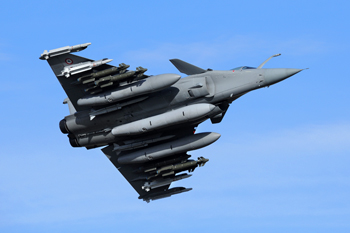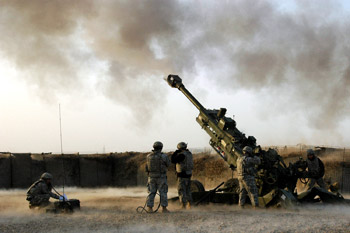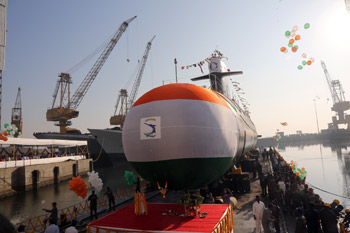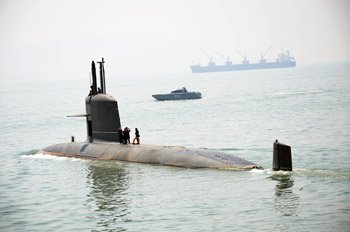INDIAN ARMED FORCES CHIEFS ON OUR RELENTLESS AND FOCUSED PUBLISHING EFFORTS

The insightful articles, inspiring narrations and analytical perspectives presented by the Editorial Team, establish an alluring connect with the reader. My compliments and best wishes to SP Guide Publications.

"Over the past 60 years, the growth of SP Guide Publications has mirrored the rising stature of Indian Navy. Its well-researched and informative magazines on Defence and Aerospace sector have served to shape an educated opinion of our military personnel, policy makers and the public alike. I wish SP's Publication team continued success, fair winds and following seas in all future endeavour!"

Since, its inception in 1964, SP Guide Publications has consistently demonstrated commitment to high-quality journalism in the aerospace and defence sectors, earning a well-deserved reputation as Asia's largest media house in this domain. I wish SP Guide Publications continued success in its pursuit of excellence.
Military Modernization Kaput — and the curse of committees
 |
By Lt. General P.C. Katoch (Retd) Former Director General of Information Systems, Indian Army |




The Parliamentary Standing Committee on Defence has slammed the Government on March 9 through its report tabled in Parliament on Demands for Grants for 2017-18, for its lack adhocism, casual and lackadaisical approach saying it would adversely affect the country's defence preparedness as well as hit the morale of the armed forces. Media may enjoy using the term "slammed" but what is the use? This committee, like all other committees, is just an advisory body whose observations and recommendations are consigned to the cupboard or trash can without much ado. It is certainly not akin to the Senate Armed Forces Committee of the US, to whom the US Government is answerable, which should be the case in any democracy. Isn't it a shame that in a paper submitted to the Indian Government, the National Security Council had appreciated Parliament as the top target of terrorists three years before the attack that found us totally unprepared? But military modernization is not the only issue that is hitting the morale of the armed forces, as indicated by the above committee.
There are many issues contributing to this, some prominent ones being:
- Armed Forces Tribunal directed government to implement Non-Functional Upgradation (NFU) in respect of the military, which has already been granted to IAS and other allied services including the IPS, but government has failed to act;
- Military is the only service downgraded in status by the 7th CPC including reduction in allowances and reduction in disability pensions;
- MoD's October 18, 2016 letter lowering status of armed forces that adds to existing functional woes of civilian officers with lower designation refusing to take directions from military officers, now claiming superiority having been granted NFU and 7th CPC;
- Refusal of MoD to cancel the said 18 Oct 2016 letter on grounds it is for assigning duties and responsibilities with respect to Armed Forces Civil Services Officers (AFCSO) posted to service HQs — implying this state of affairs is acceptable to the government;
- An MLC from Solapur publicly abuses security forces by asking how soldiers wives have babies when soldiers are posted on borders for many years, and this rat is let off because of vote-bank politics.
If the youth in universities are being programmed for shouting anti-India slogans as part of hybrid warfare of our enemies, so is the move to downgrade military in stature even as it controls increased hostility from across borders. Whether certain government functionaries are gullible innocents or willing collaborators of our adversaries is the moot question. Getting back to the snubbing by the Parliamentary Standing Committee on Defence to the government, the highlights include: in terms of modernization demands for FY 2017-2018, the Army, Navy and Air Force have only received 60%, 67% and 54% respectively; only 86,488 crore has been earmarked for modernization from the total defence outlay of 2.74 lakh crore — what makes matters worse is bulk of this capital will be used to pay "committed liabilities" of earlier arms contracts instead of new projects; Army received only 25,254 crore against its demand of 42,500 crore, and with committed liabilities of 23,000 crores it leaves only 2,254 crore for new projects — which is likely to affect both modernization and operational preparedness; IAF that should have a 458-aircraft force by 2027 is making do with just 235 aircraft at present, with many of them on their last legs; huge deficiencies in authorized and existing levels of ships, submarines and aircraft, and; the Committee has asked government to provision at least another 13,000 crore additional capital for modernization.
As per media, MoD has written to the MoF for additional funds but that may be the end of the story what with the euphoria of the recent elections. India somehow has not been able to strike the appropriate balance between economic development and national security. With predictable difference of opinions, any coherent national security strategy must have a long-term thought process and vision, the basis for which is strategic culture. We neither have a national security strategy and while we desire global status, we take decisions in the cloistered confines of MoD and MoF, which is hardly appropriate.





